
"Eritrea" is an ancient name, associated in the past with its Greek form Erythraia, Ἐρυθραία, and its derived Latin form Erythræa. This name relates to that of the Red Sea, then called the Erythræan Sea, from the Greek for "red", ἐρυθρός, erythros. The Italians created the colony of Eritrea in the 19th century around Asmara, and named it with its current name. After World War II, Eritrea was annexed to Ethiopia. In 1991, the communist Ethiopian government was toppled by Eritrean people liberation front (EPLF) which earned their independence. Eritrea officially celebrated its 1st anniversary of independence on May 24, 1991

Haile Selassie I was Emperor of Ethiopia from 1930 to 1974. He rose to power as Regent Plenipotentiary of Ethiopia (Enderase) for Empress Zewditu from 1916. Haile Selassie is widely considered a defining figure in modern Ethiopian history, and the key figure of Rastafari, a religious movement in Jamaica that emerged shortly after he became emperor in the 1930s. He was a member of the Solomonic dynasty, which claims to trace lineage to Emperor Menelik I, believed to be the son of King Solomon and Makeda the Queen of Sheba.

The Derg, officially the Provisional Military Administrative Council (PMAC), was the military junta that ruled Ethiopia, then including present-day Eritrea, from 1974 to 1987, when the military leadership formally "civilianized" the administration but stayed in power until 1991.

Tsehafi TaezazAklilu Habte-Wold was an Ethiopian politician under Emperor Haile Selassie. He was foreign minister of Ethiopia from 1947 to 1958 and Prime Minister from 1961 until his death by the Derg execution in 1974.
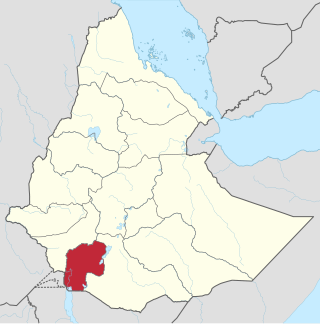
Gamu-Gofa was a province in the southern part of Ethiopia, named after two of the ethnic groups living within its boundaries, the Gamo and the Gofa. First incorporated into Ethiopia by Emperor Menelik II in the 1880s, its capital was first at Chencha, then around 1965 the capital was moved to Arba Minch. This province was bordered on the west and north by Kaffa, on the north and east by Sidamo, on the southeast by Lake Chew Bahir, and on the south by Kenya and Lake Turkana.

Begemder was a province in northwest Ethiopia.
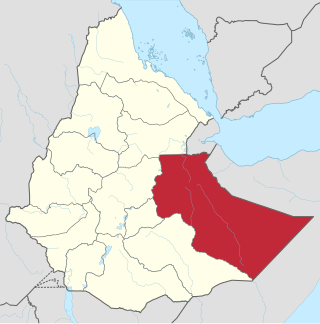
Hararghe was a province of eastern Ethiopia with its capital in Harar.
Historically, Ethiopia was divided into provinces, further subdivided into awrajjas or districts, until they were replaced by ethnically-based regions (kililoch) and chartered cities in 1995.

The Ethiopian Empire, also formerly known by the exonym Abyssinia, or just simply known as Ethiopia, was an empire that historically spanned the geographical area of present-day Ethiopia and Eritrea from the establishment of the Solomonic dynasty by Yekuno Amlak approximately in 1270 until the 1974 coup d'etat of Emperor Haile Selassie by the Derg. By 1896, the Empire incorporated other regions such as Hararghe, Gurage and Wolayita, and saw its largest expansion with the federation of Eritrea in 1952. Throughout much of its existence, it was surrounded by hostile forces in the African Horn; however, it managed to develop and preserve a kingdom based on its ancient form of Christianity.
Wolde Giyorgis Wolde Yohannes was an important government Minister during the reign of Haile Selassie. Between 1941 and his downfall in 1955, he came to dominate Ethiopian politics for a decade and a half, not only serving as Tsehafi Taezaz or Minister of the Pen (1941–1955), but at times Minister of the Interior (1943–1949), and Minister of Justice (1949–1955).

Emperor Haile Selassie proclaimed a revised constitution in November 1955 of the Ethiopian Empire. This constitution was prompted, like its 1931 predecessor, by a concern with international opinion. Such opinion was particularly important at a time when some neighboring African states were rapidly advancing under European colonial influence and Ethiopia was pressing its claims internationally for the incorporation of Eritrea, where an elected parliament and more modern administration had existed since 1952.

The 1931 Constitution of Ethiopia was the first modern constitution of the Ethiopian Empire, intended to officially replace the Fetha Nagast, which had been the supreme law since the Middle Ages. It was promulgated in "an impressive ceremony" held 16 July 1931 in the presence of Emperor Haile Selassie, who had long desired to proclaim one for his country. In the preface to his translation of this constitution into English, William Stern writes, "this was the first instance in history where an absolute ruler had sought voluntarily to share sovereign power with the subjects of his realm." This statement, however, is not completely accurate, as the adoption of a constitution was somewhat pressed by international opinion.

General elections were held in Ethiopia between 1 and 30 September 1957, to elect 210 members of the Chamber of Deputies, the lower house of the Ethiopian parliament. These elections followed the new constitution which had been enacted by Emperor Haile Selassie in 1955, and were the first ever held in that ancient country.
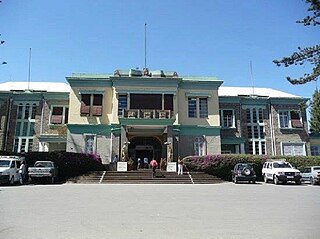
The 1960 Ethiopian coup d'etat attempt was an attempted coup d'etat and a series of shootouts in the Ethiopian Empire on 13 December 1960 against Emperor Haile Selassie. The Council of the Revolution, four conspirators led by brothers Germame Neway and Brigadier General Mengistu Neway, commander of the Kebur Zabagna, sought to overthrow the Emperor during a state visit to Brazil in order to install a progressive government. The coup leaders declared the beginning of a new government under the rule of Haile Selassie's eldest son, Crown Prince Asfaw Wossen, that would address the numerous economic and social problems Ethiopia faced. The Council gained control of most of the capital city, Addis Ababa, and took several ministers and other important people hostage. After its initial success, the majority of the military and populace quickly aligned against the coup, and by 17 December loyalists had regained control of Addis Ababa. At least 300 people were killed during the coup, including most of the conspirators.
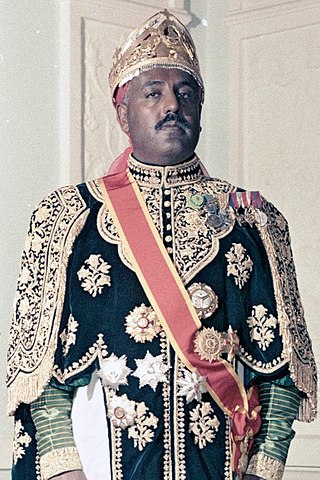
LeulRasAserate KassaGCVO was a Viceroy of Eritrea and a member of the nobility of the Ethiopian Empire. He was the fourth son of Ras Kassa Haile Darge, and his wife Princess (Le'ilt) Tsige Mariam Beshah. Prince Aserate Kassa was educated at Monkton Combe School in the United Kingdom between 1937 and 1938. He was married to (Le'ilt) Zuriashwork Gebre-Igziabiher, daughter of Jantirar Gebre-Igziabiher, and granddaughter of Empress Menen Asfaw, consort of Emperor Haile Selassie I. Prince Aserate Kassa was the head of the Selalle sub-branch of the Shewan branch of Ethiopia's Imperial Solomonic dynasty.
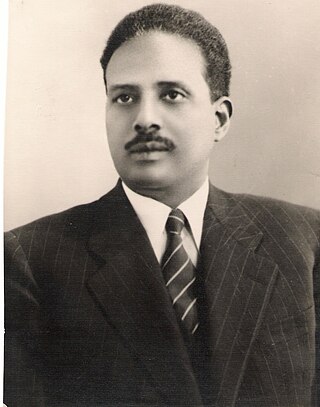
Ambaye Wolde Mariam, best known as Dr. Ambaye, was an important politician under Emperor Haile Selassie. He was the political and legal advisor to the Duke of Harar in 1935, Vice Minister of Justice in 1942, Vice Foreign Minister in 1946, Minister of Justice in 1947 and Minister in the Prime Minister's Office in 1952. He was Foreign Minister (acting) in 1953 until shortly before his death.

The legal systems of Eritrea go as far back as the 14th century. Before independence, Eritrea was colonized by Italy and later occupied by Britain, therefore subjugated to those nations' laws through the World War II era. In the 1950s, the United Nations gave neighboring Ethiopia power and responsibility for Eritrea, and thus its legal system mirrored that of Ethiopia. After gaining its independence in 1993, Eritrea began to draft its own constitution, which was implemented in 1997. Much of Eritrea's judicial system is spelled out in this Constitution. However, even today, customary law has remained the most prevalent law in the lives of most Eritreans.

Ethiopian nationality law is regulated by the Constitution of Ethiopia, as amended; the Ethiopian Nationality Proclamation, and its revisions; and various international agreements to which the country is a signatory. These laws determine who is, or is eligible to be, a national of Ethiopia. The legal means to acquire nationality, formal legal membership in a nation, differ from the domestic relationship of rights and obligations between a national and the nation, known as citizenship. Nationality describes the relationship of an individual to the state under international law, whereas citizenship is the domestic relationship of an individual within the nation. Ethiopian nationality is typically obtained under the principle of jus sanguinis, born to parents with Ethiopian nationality. It can be granted to persons with an affiliation to the country, or to a permanent resident who has lived in the country for a given period of time through naturalization.
This list details about chronological aspect of the Derg, the military junta that ruled Ethiopia from 1974 to 1987 by decade.

On 12 September 1974, Emperor Haile Selassie was deposed by the Derg, a Soviet-backed military junta that consequently ruled Ethiopia until 1991.
















